Who Are The San Antonio River Authority Scientists?
The San Antonio River Authority relies on water quality scientists, aquatic biologists, stormwater scientists and environmental investigators to collect and analyze data that identifies positive and negative conditions in the San Antonio River.
State-of-the-Art Laboratory
Meet a real-life Water Quality Scientist at the San Antonio River Authority!
The San Antonio River Authority water quality scientists use scientific principles to test for pollutants in the San Antonio River. Their work is used to assess whether wastewater plants are discharging properly treated water into our waterway, conditions of a water body immediately prior to and during a rain event, identify trends and correlations of pollutants throughout the watershed, on-going assessment of watershed conditions, and determine the effectiveness of best management practices for stormwater runoff.
Aquatic Biologists and Stormwater Scientists at the San Antonio River Authority collect surface water, stormwater, and sediment samples from the San Antonio River Basin. These samples are submitted to the River Authority Environmental Laboratory where scientists generate water quality data by conducting a variety of chemical, physical, and biological tests. Data is then compiled, analyzed, and summarized in reports using graphs, charts, and maps. The analytical reports are used to identify water quality impairments and concerns, assist in making decisions to promote basin wide cooperative planning, and communicate the health of our creeks and rivers.
Discover the life of a water sample in the San Antonio River Authority’s state-of-the-art laboratory. This video shows a simplified overview of four key laboratory tests that help determine the health and pollution levels of the fresh water in the San Antonio River.
Aquatic Biologists
The San Antonio River Authority aquatic biologists search for clues that help us understand what keeps the ecosystem in a healthy balance and identify threats. Aquatic biologists investigate and assess aquatic populations (fish, bugs, and mussels) in the San Antonio River during ambient conditions and the impacts of their populations after a rain event to explain how run off water and the pollution it carries into the river from the surrounding land can impact the entire aquatic ecosystem in our watershed.
Mussel Survivability Study
Freshwater mussels are a very important group of organisms that no longer occur in the upper reaches of the San Antonio River. A wide variety of human impacts has caused their decline and has made the chances of natural recolonization very unlikely. However, the resiliency of the Mission Reach has been improved since the Mission Reach Restoration was completed in 2013. River Authority biologists are evaluating the survivability and growth of four native freshwater mussel species in the Mission Reach of the Upper San Antonio River to determine the feasibility of a future reintroduction.
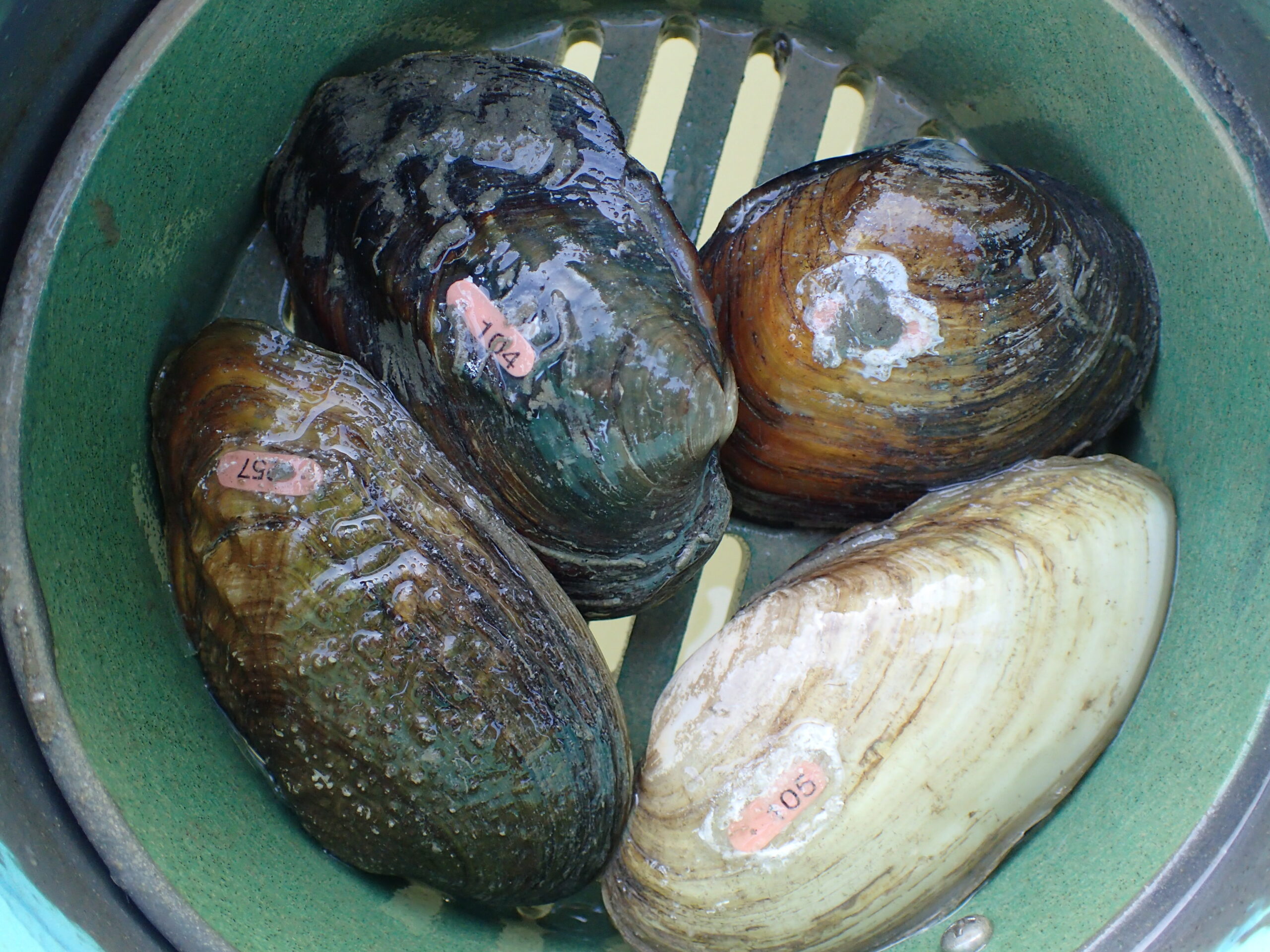
Texas Clean Rivers Program
The Texas Clean Rivers Program is a partnership between the Texas Commission on Environmental Quality (TCEQ) and regional water authorities to coordinate and conduct water quality and biological monitoring, assessment, and stakeholder participation to improve the quality of surface water within each river basin in Texas. As the San Antonio River Authority is committed to safe, clean, and enjoyable creeks and rivers, the River Authority and its partners utilize a watershed management approach to identify and evaluate water quality, establish priorities for corrective action, and works with the TCEQ to implement those actions throughout the San Antonio River Basin.
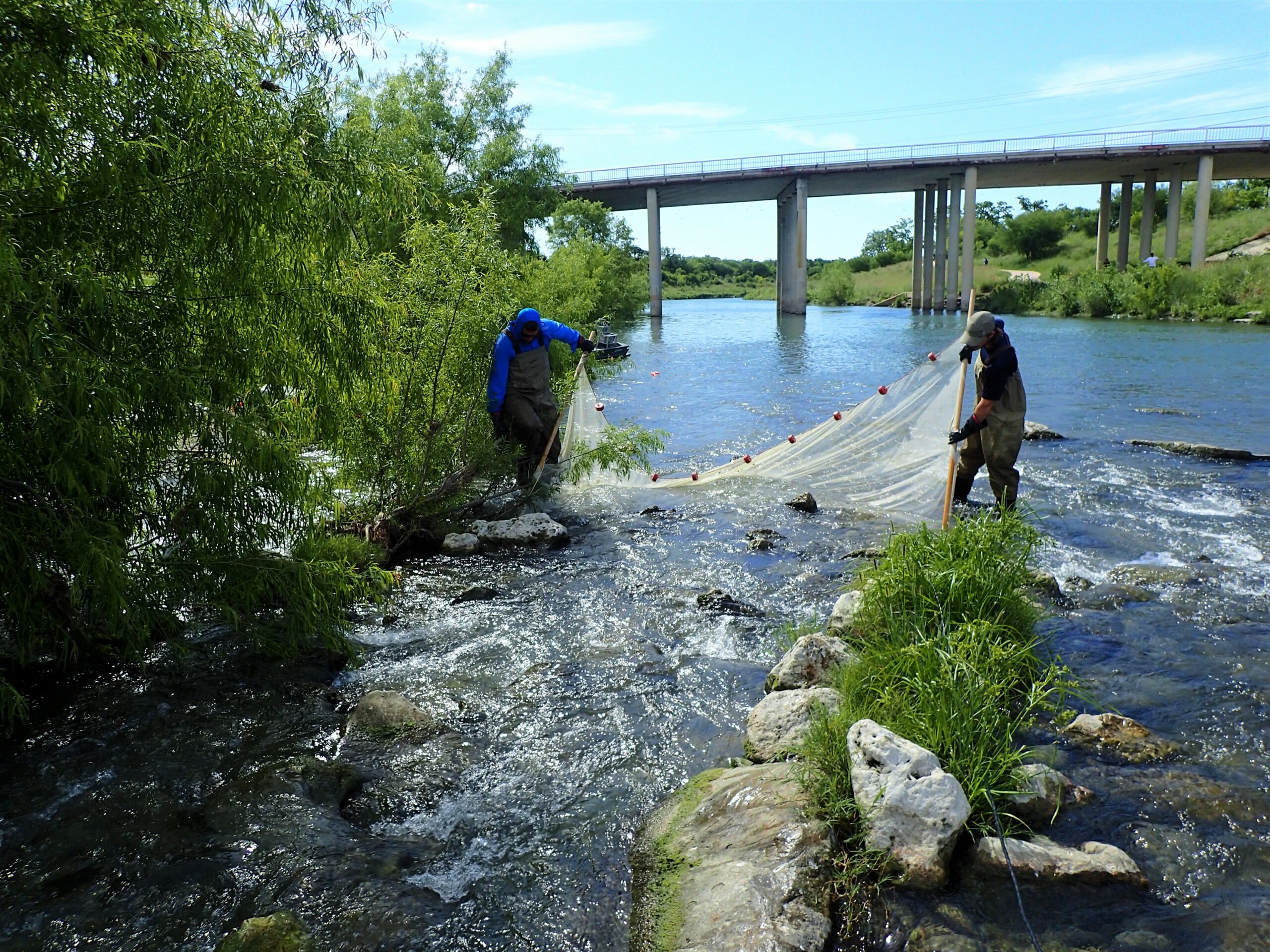
Stormwater Monitoring
Stormwater runoff carries high levels of contaminants including bacteria and heavy metals into the river. These contaminants are potentially harmful to our fish, mussel and aquatic insect communities. Automatic water samplers draw water from carefully selected stations along our creeks and rivers during rain events of varying magnitude and the samples are analyzed by San Antonio River Authority water quality scientists. It is very important to understand how stormwater runoff affects water quality so that we can develop and implement mitigation strategies and achieve high water quality standards.
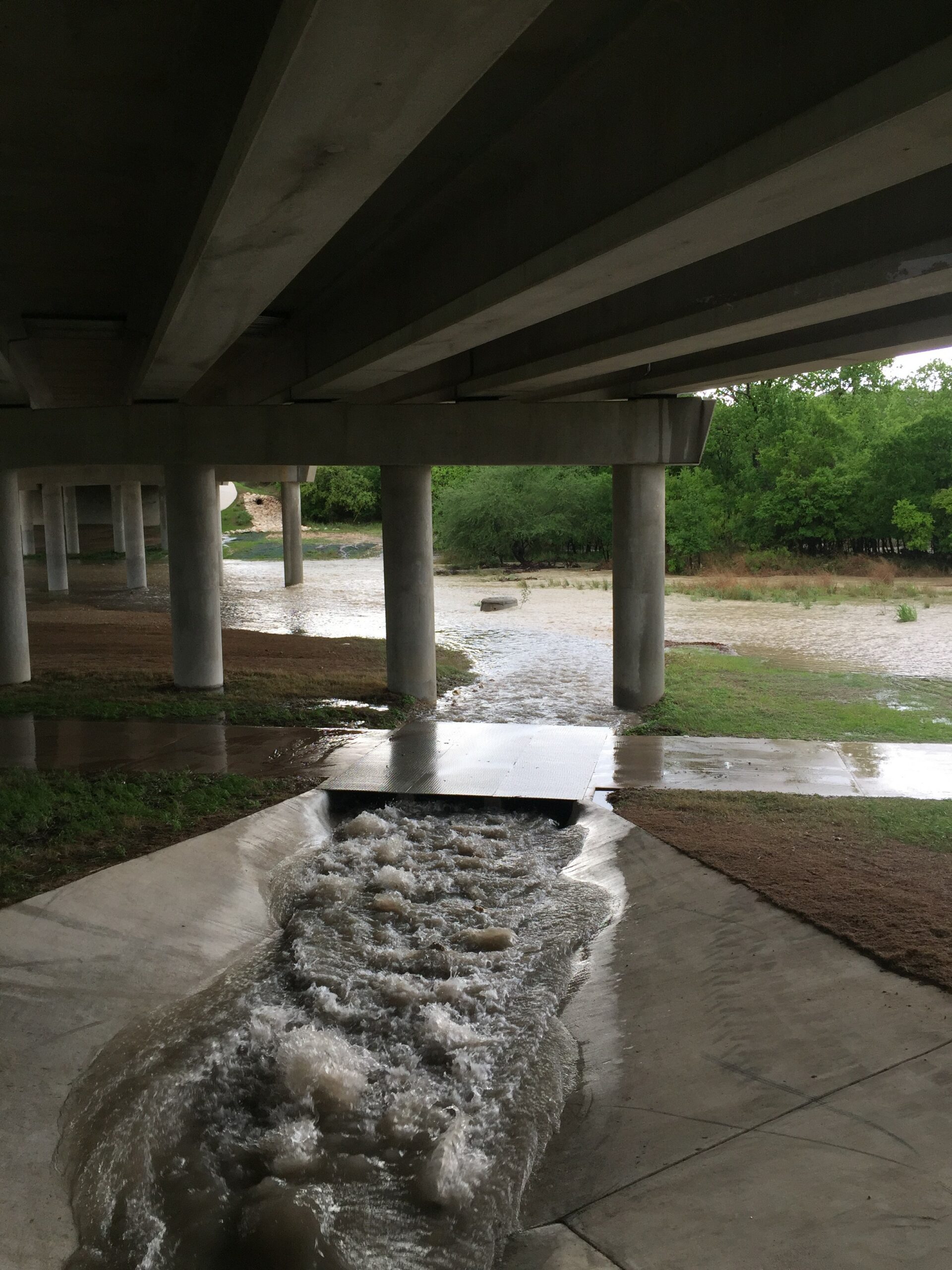
Biological Surveys
River Authority biologists perform routine biological surveys on several sites spanning the San Antonio River basin. These surveys include fish and benthic macroinvertebrate collections, a habitat evaluation and a 24 hour dissolved oxygen monitoring event. The data that is collected on these surveys can be used to gain insight into stream health by looking at different metrics such as number of species. This data provides valuable insight into the overall suitability for aquatic life in that stretch of river.
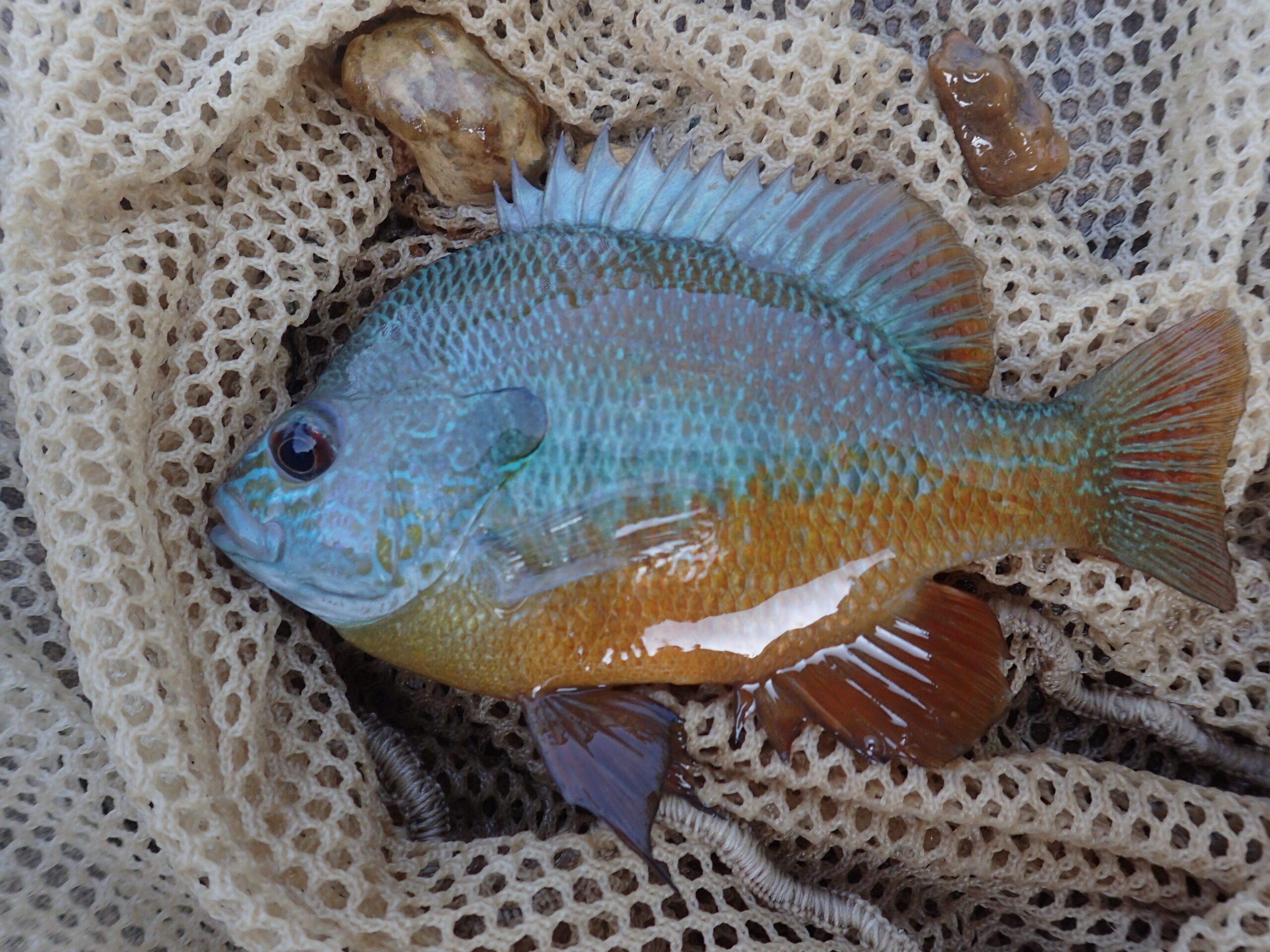
Intensive Monitoring
There are occasionally special studies or pollution events that are of interest to The River Authority environmental scientists that requires a more focused and intensive look at the water quality at a certain location. Intensive monitoring typically involves taking frequent samples in a short amount of time from a relatively small area in order to gain insight into potential water quality issues at a high resolution. These sampling events can lead to the detection of point or nonpoint source pollutant contributions which can lead to additional investigations and subsequent mediation.
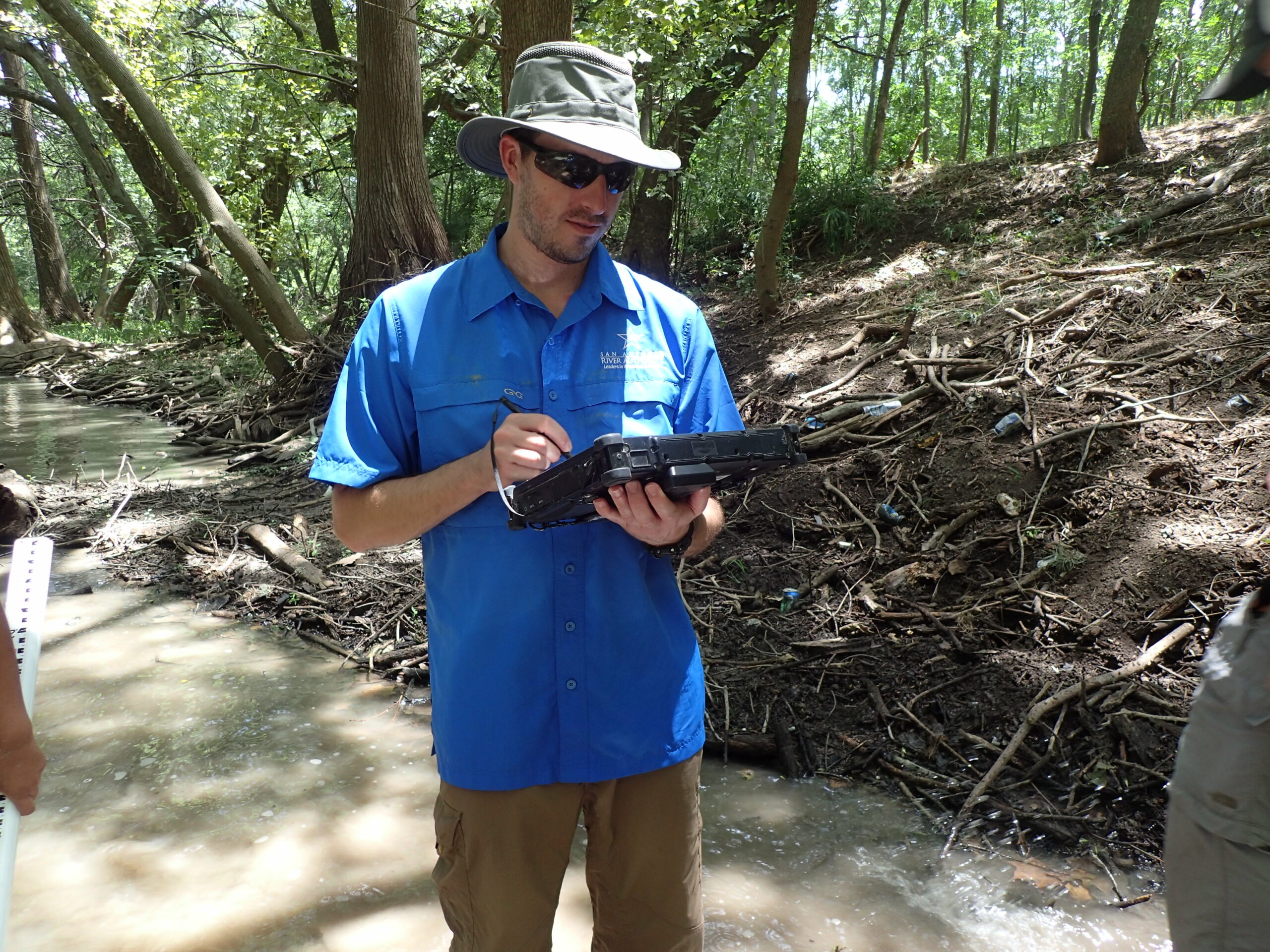
Guadalupe Bass Reintroduction Effort
Over the past few years, Texas Parks and Wildlife, through a partnership with the San Antonio River Authority has stocked around 84,000 young Guadalupe Bass (Micropterus treculii), the state fish of Texas, into the Mission Reach of the San Antonio River. Guadalupe Bass are intolerant to poor water and habitat quality; so while the fish provide an amazing opportunity for anglers in the Mission Reach, they also provide The River Authority biologists information on the suitability of the Mission Reach to support such a sensitive species. Over the past few years, River Authority biologists have found an abundance of healthy Guadalupe Bass in their biological surveys which indicates that a reproducing population has been established.
Environmental Flows Validation
Water is a hotly contested resource in Texas and across the United States. The Environmental Flows Program is a statewide environmental effort to determine how much water is necessary to flow through a river in order to maintain a sound ecological environment. Standards have been proposed through the work of countless entities and the validation of these proposed standards is necessary in order to determine their effectiveness across all organismal groups and habitat connectivity across seasons. The San Antonio River Authority, through a partnership with several other groups, will be performing work on the San Antonio River studying, among other things, water quality, mussels and fish communities across several different flow categories (e.g. low flow, flood) to add to this validation effort.
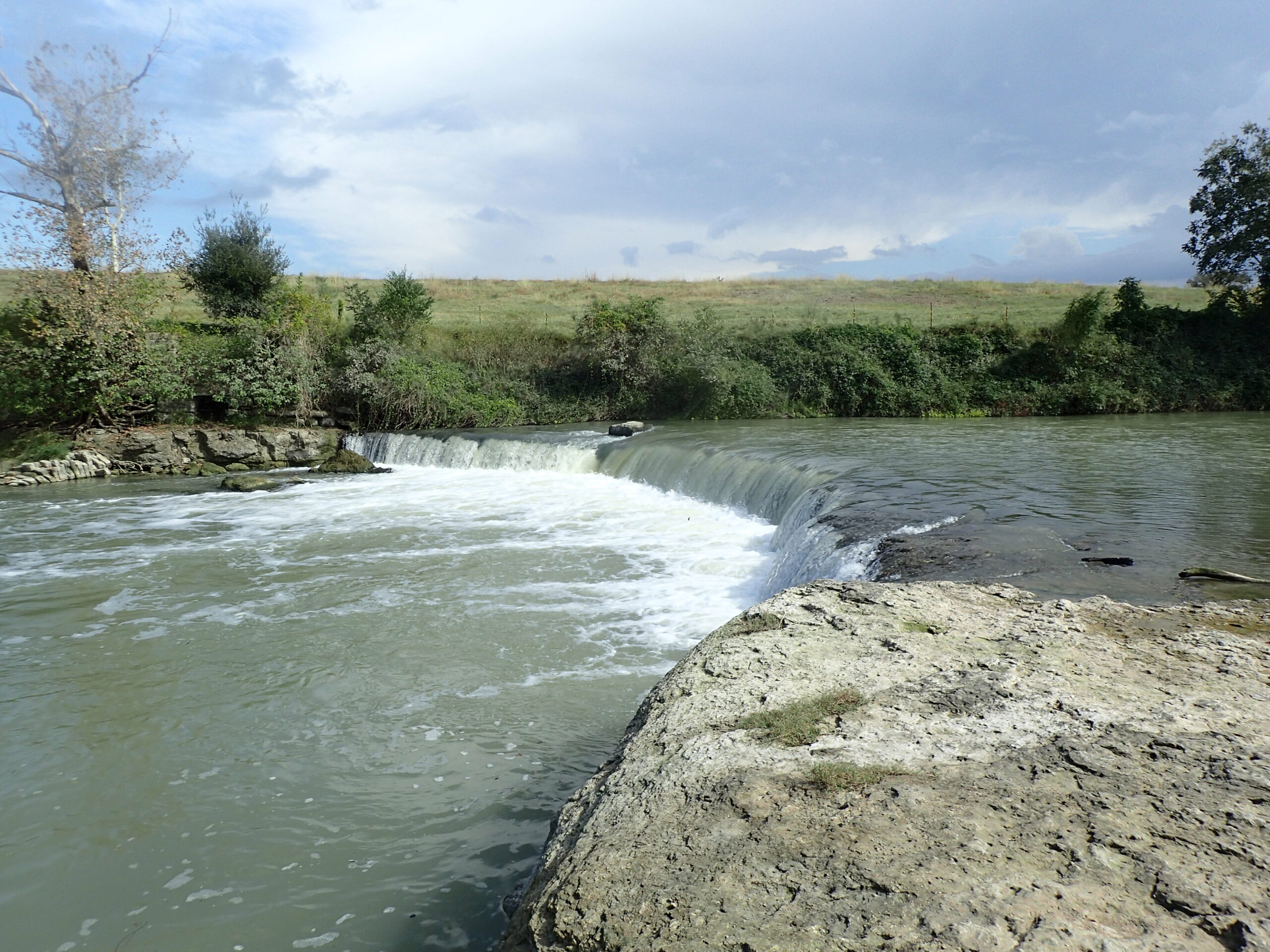
Holistic Freshwater Mussel Project
Understanding the freshwater mussel assemblage throughout the San Antonio River basin is extremely important. Knowing the status of these at risk populations helps scientists across the state make more informed management decisions in an effort to protect them. San Antonio River Authority biologists are working to survey every mile of the San Antonio River and its major tributaries to do just that. Several survey techniques including diving are used to find these mussels in our rivers. To date, River Authority biologists have found over 900 individuals representing 12 species throughout the basin.
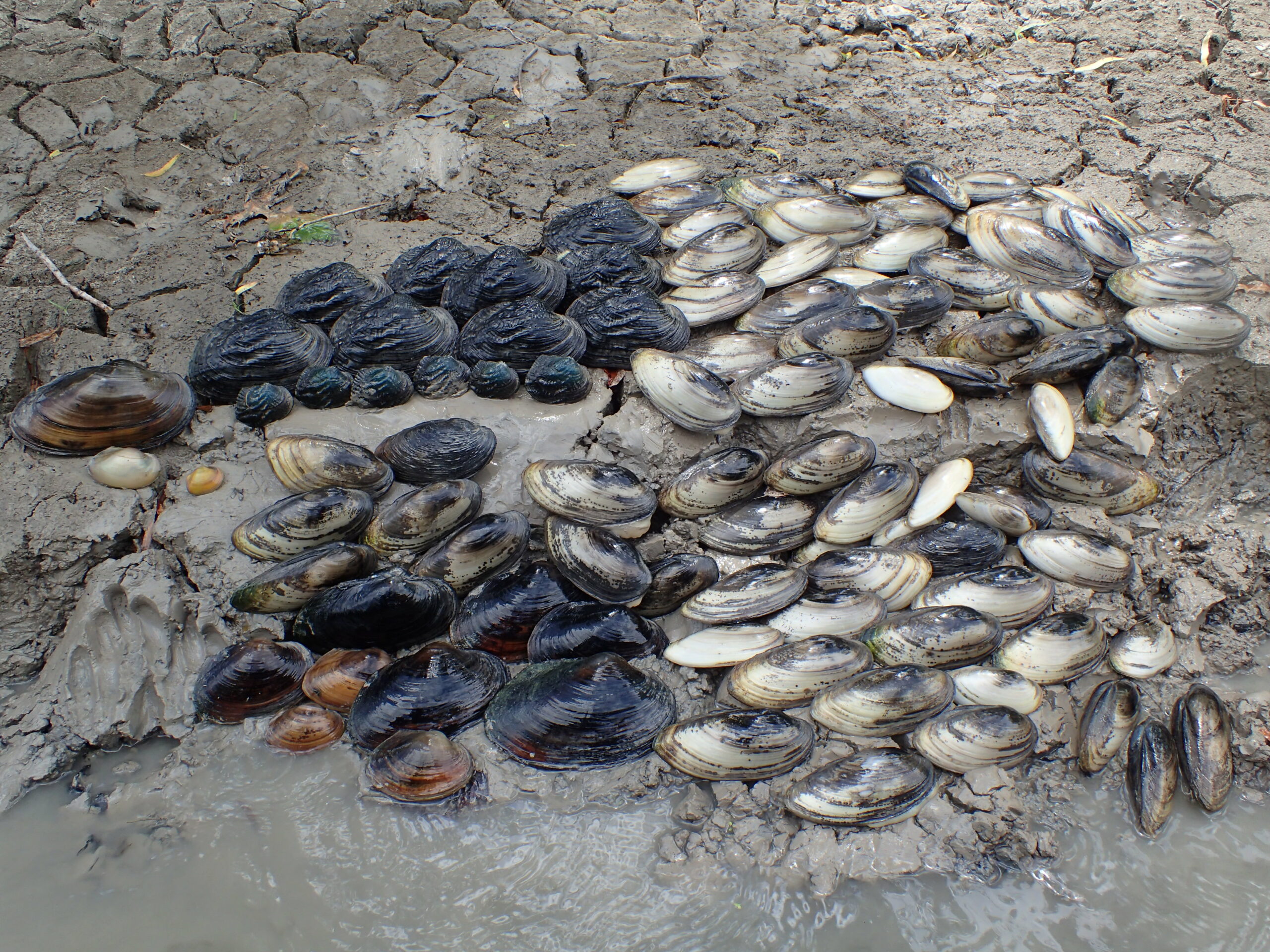
Education & Outreach
San Antonio River Authority Aquatic Biologists provide a variety of education and outreach opportunities to the public including field demonstrations of stream sampling at the Cibolo Nature Center to educational discussions at local universities.

Stormwater Scientists
The Stormwater Monitoring Team at the San Antonio River Authority provides data and sample acquisition in support of stormwater monitoring and modeling efforts. The team installs and maintains water quality monitoring equipment throughout the San Antonio River Watershed and strives to provide high quality data in a safe and cost-effective manner. The main objectives are to understand how stormwater runoff generated during storm events affects water quality and quantity and to determine the effectiveness of Best Management Practices (BMPs) for water quality improvement. The data generated through these efforts provides a scientific basis for the development and implementation of mitigation strategies. The River Authority’s Stormwater Team collaborates with the University of Texas at San Antonio (UTSA) and other state and local entities; supports the City of San Antonio Edwards Aquifer Protection Program’s water quality projects component; and provides community outreach by presenting at schools and local, regional and national conferences.
Meet at Stormwater Scientist and check out some of the stormwater projects at the San Antonio River Authority:
Guenther and Euclid Stormwater Retrofit Project
As a demonstration of how LID BMPs can be added to an existing development, in particular one with a limited amount of available land, the River Authority retrofitted its 100 E. Guenther headquarters property with permeable pavers, bioretention (rain gardens), and cisterns to manage stormwater runoff that previously flowed directly into the San Antonio River.
At the River Authority’s Environmental Center, 600 E. Euclid Ave., the River Authority team constructed a series of rain gardens that run the length of the building and two 22-foot tall cisterns. The rain gardens manage 1/3 of the building’s rooftop runoff from a 1.8” storm, and the cisterns collect the remainder of the building’s rooftop runoff from a 1.8” storm for onsite irrigation. The River Authority offers a number of tours each year to design and development professionals who are also interested LID design managing storm water runoff and reducing stormwater runoff pollution.
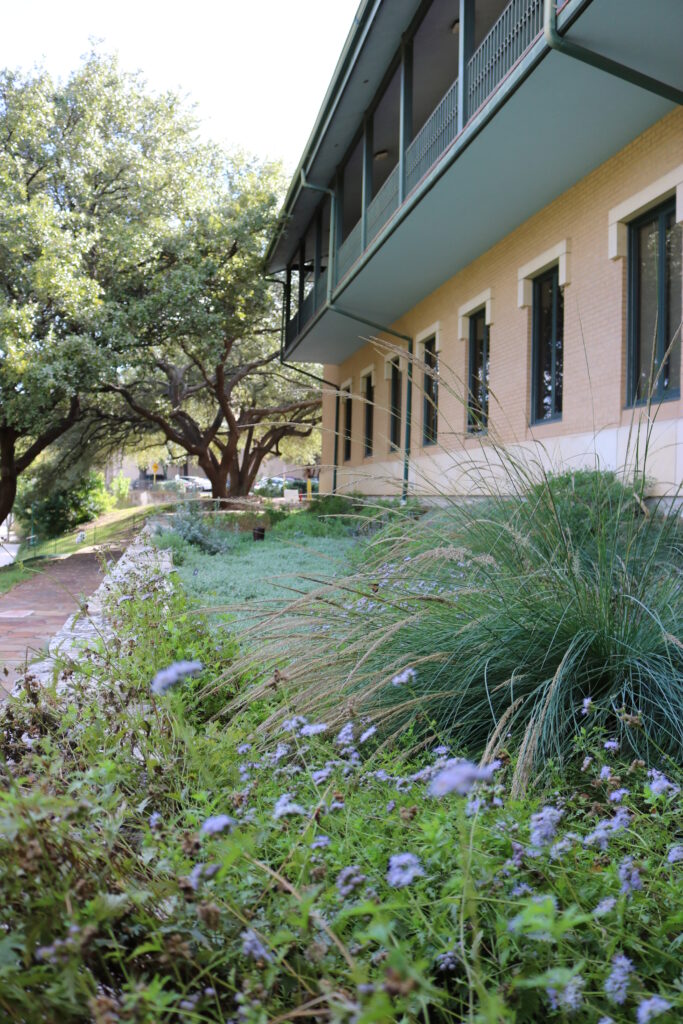
Impervious Cover Mitigation Project
While the City of San Antonio was leading stakeholder working group discussions of development within its phase 1 SA Tomorrow Regional Centers, the San Antonio River Authority conducted an analysis of the impacts of impervious cover on one of those regional centers: Brooks. The River Authority’s analysis centered upon current development, future projected development utilizing current development trends, and future projected development mitigated through a tailored set of best management practices recommended for the Brooks area. For each of the three scenarios, the River Authority analyzed localized and river flooding, surface water quality, and trash pollution. The River Authority’s analysis also considered climate impacts and cost-benefit assessments—all with the goal of meeting the community’s growth needs while mitigating impacts to the watershed.
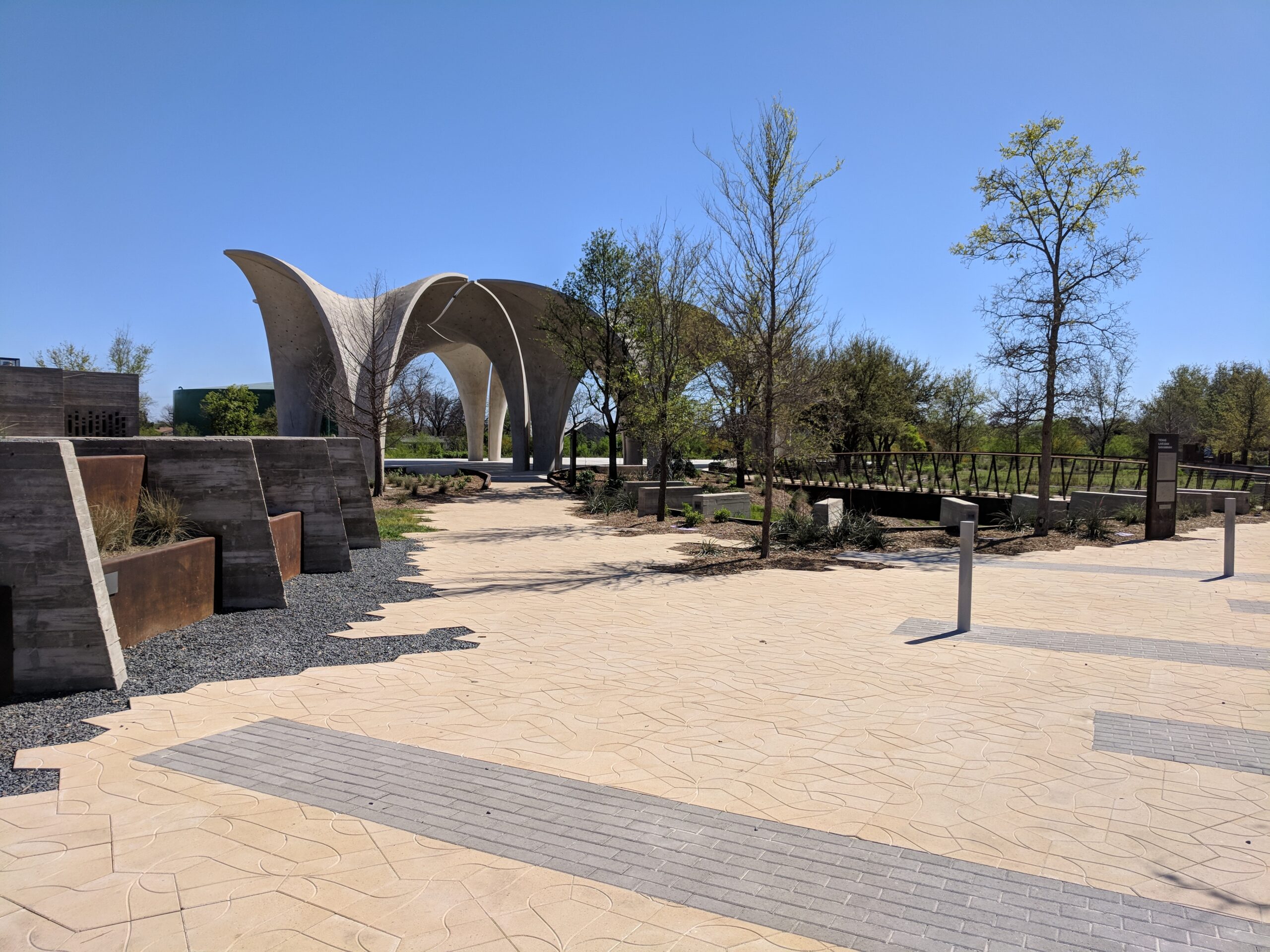
Environmental Investigator
The San Antonio River Authority environmental investigators protect the San Antonio River by identifying and resolving illegal activities and environmental crimes that could be harmful to the health of the river. When an illegal activity is found, an investigation takes place to identify harmful impacts to water quality, riparian habitat and human health and safety within the basin.
The team works closely with other governmental agencies to help resolve environmental and noncompliance issues found within our basin. They respond to complaints and communicate with land owners, state and local agency officials, regulatory officials and the public as necessary to resolve and follow-up on emergency situations involving the San Antonio River Basin streams.
Meet an Environmental Investigator at the San Antonio River Authority:
Illegal Activity and Environmental Crime
If you see something illegal or hazardous dumped within the San Antonio River Basin, your first call should be to your local law enforcement officer. Your second call should be to the River Authority’s environmental investigations team at (210) 227-1373 or, toll free at 1 (866) 345-7272. They will make sure that the appropriate agencies with enforcement powers are contacted. They will also research solutions to the problem and keep the caller informed of progress in the investigation.

